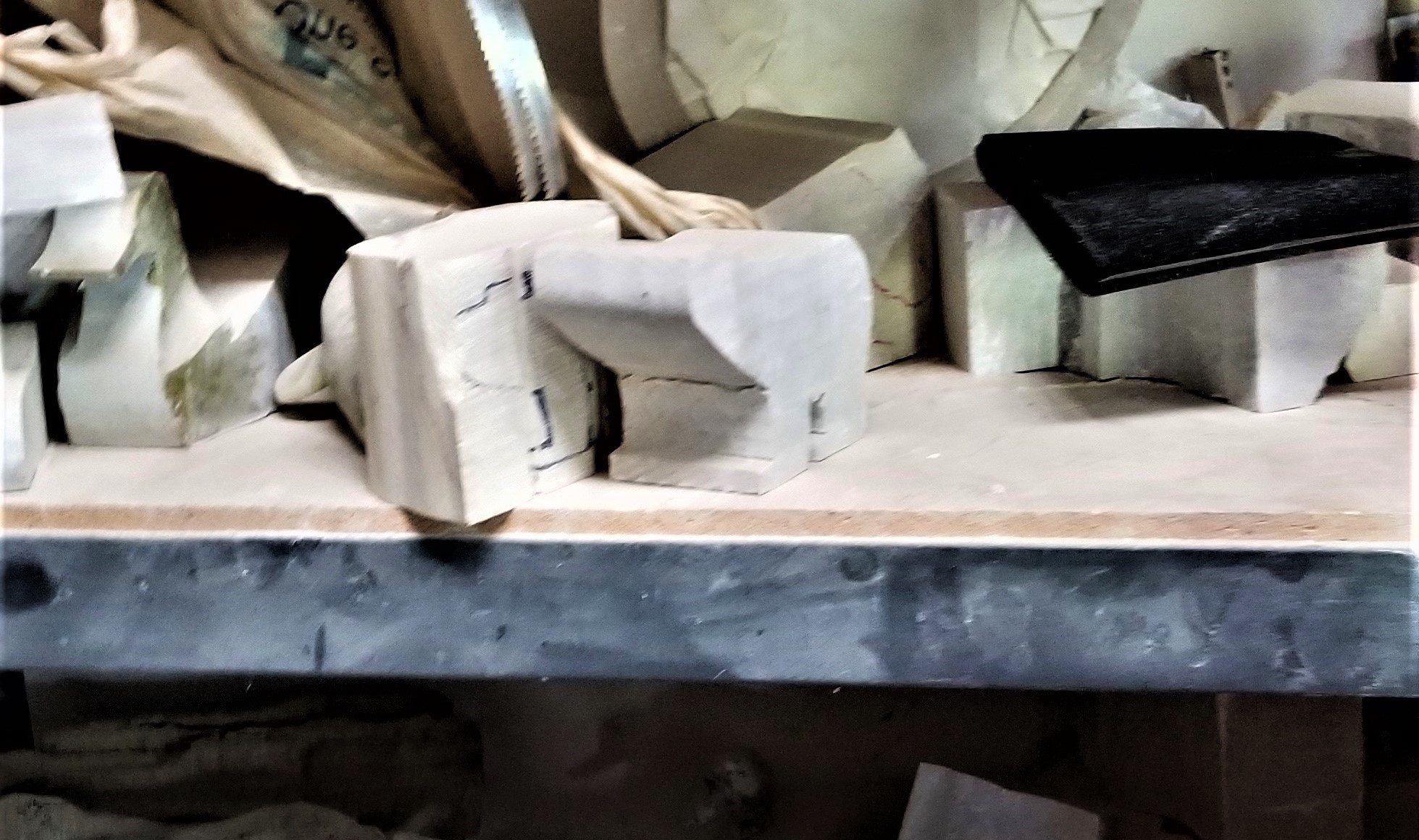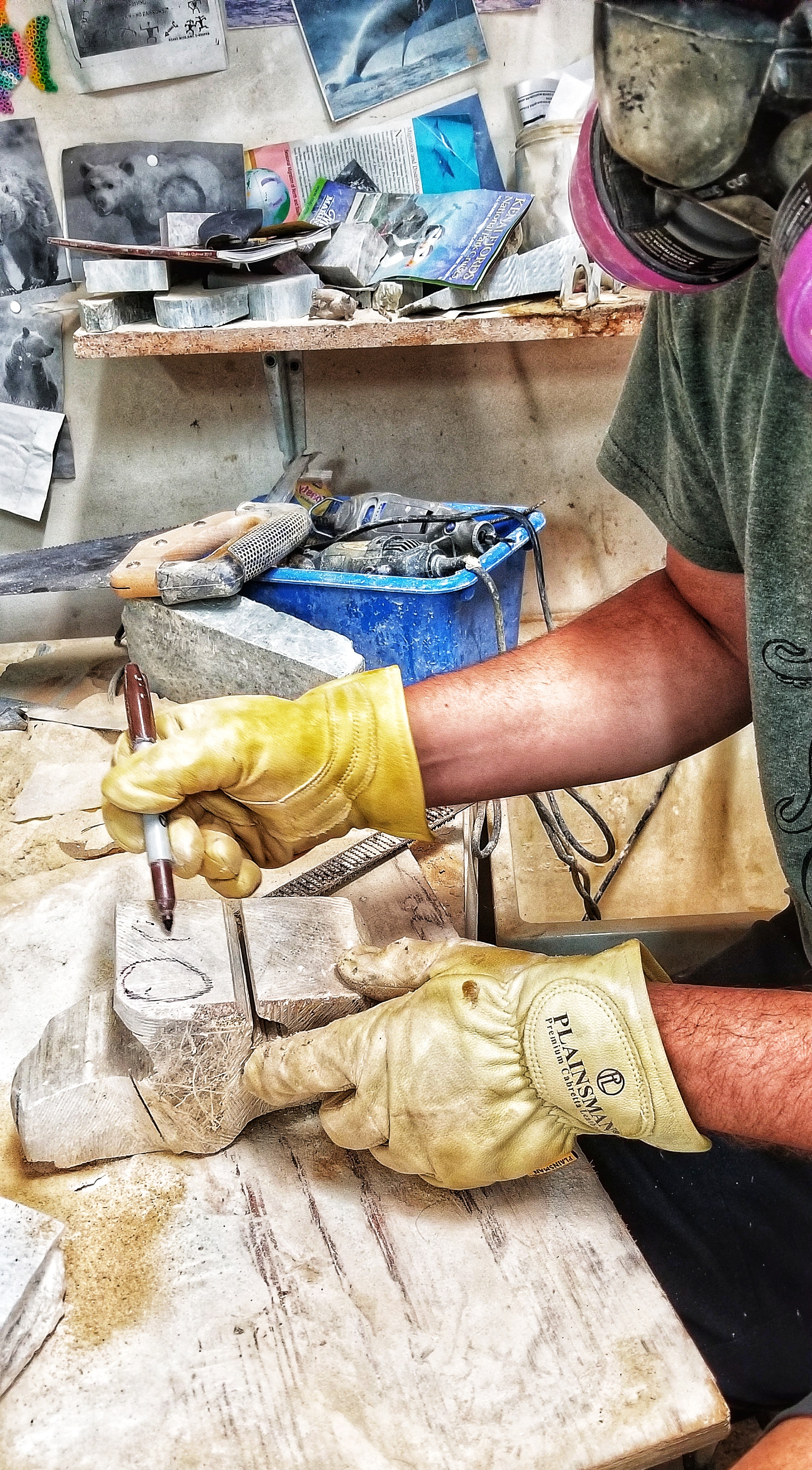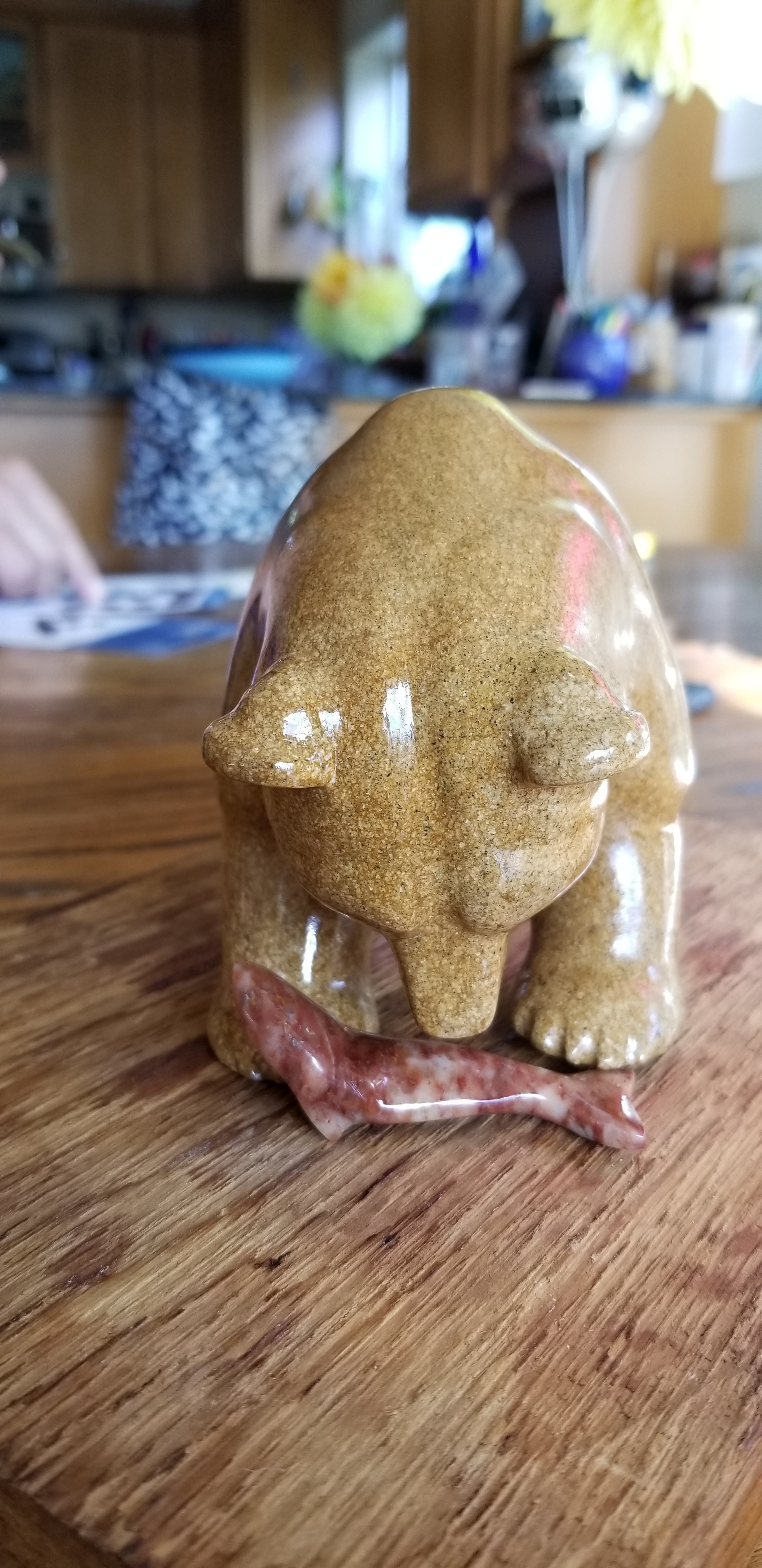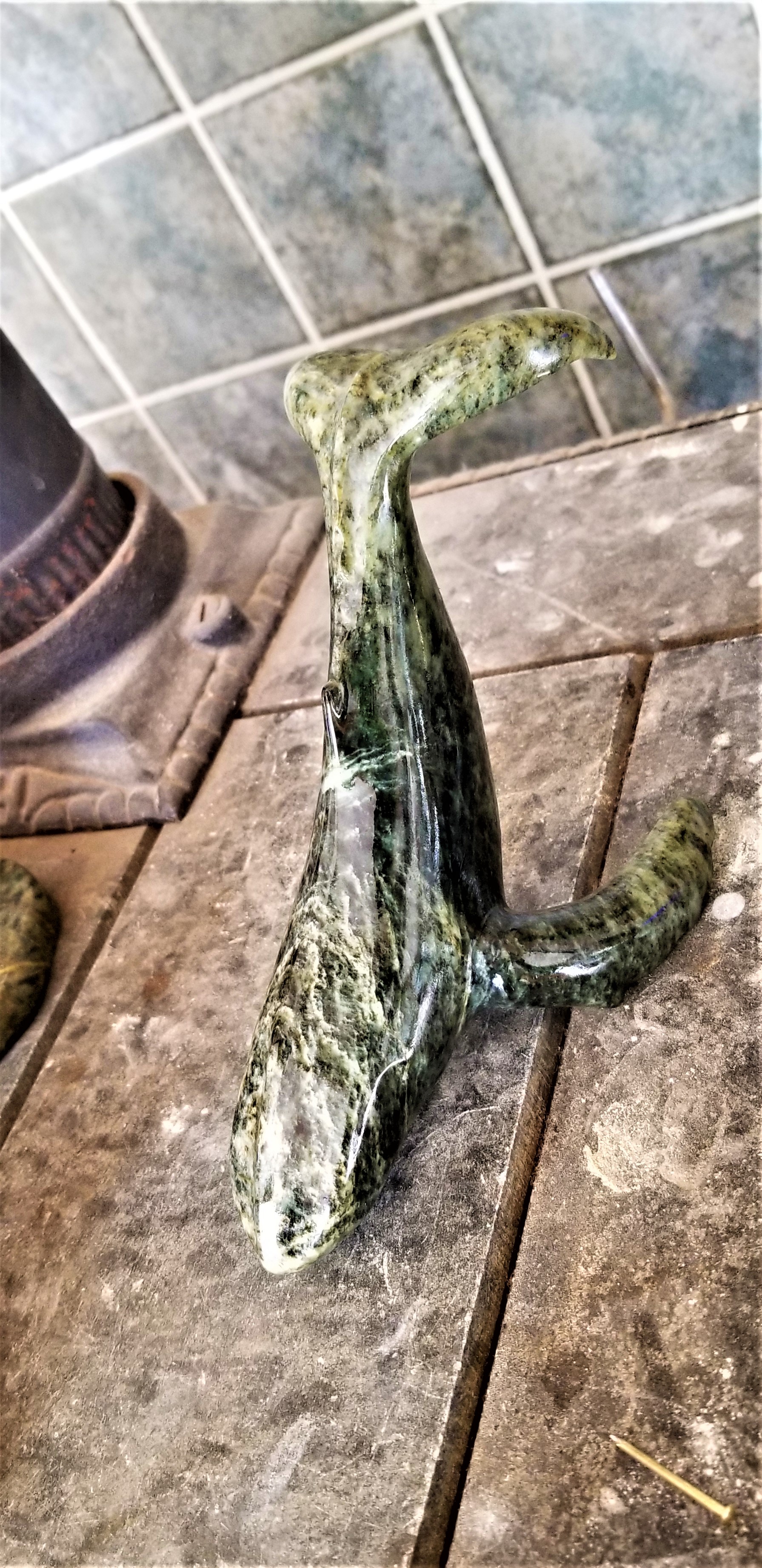Jack Hepler has been carving soapstone sculptures since he was in middle school. I've known Jack since that time and remember seeing a vast array of sculptures he, his dad, and brother would produce during breaks from school. There were ducks and loons and a variety of other water fowl in all sizes and colors. I am fortunate to own a loon carved by Jack. Unfortunately the beak and the tail have been damaged over the past 30 years so it's far from its original condition. And while it's no longer perfect, it's still beautiful and is always featured prominently in my home.
Like many artists, Jack has all kinds of pieces in process at any given time. He and his wife Krista have two children and he’s been a middle school teacher for 27 years. So he fits in the carving when his kids don't need him, when he's done with his teaching duties, and when he isn't out hunting or fishing.
Now let's clear something up right away: Soapstone is not made of soap. Soapstone is a rock that has a high talc content which makes the surface feel powdery and smooth to the touch. But it isn't pliable, it must be carefully manipulated with heat and carving tools in order to successfully turn it into something else.
Jack currently uses Brazilian soapstone for his creations. To determine the color the stone will be once polished -- as well as identify any cracks or fissures that could damage the piece during carving -- he uses water to illuminate the character of the stone. He chooses the raw material based on color, interesting occlusions, and size.
To break up large stones he uses a bandsaw to create smaller stones that are easier to work with. Once he selects a stone of the right size and color for his intended design, he sketches a rough outline in Sharpie directly onto the stone.
To continue the more intricate carving he wears gloves and a respirator mask. His primary tools are files, rasps, and sandpaper.
Then he files and sands and files and sands and files and sands.
Remember, while he's working with the stone, it merely looks white and powdery so the final stages really do build suspense for the big reveal.
When the piece is completed, he does a final sanding with 600 wet/dry sandpaper. He polishes with gun oil and then bakes the finished piece for 2-6 hours on a slab of wood at low heat.
Depending upon the size and intricacy of the piece, Jack spends 8-12+ hours on each of his sculptures. Sizes range from a 4" starfish up to an 18" pod of dolphins. The final one-of-a-kind product really honors the animal, with the grain of the stone bringing the creatures to life in an unexpected way.
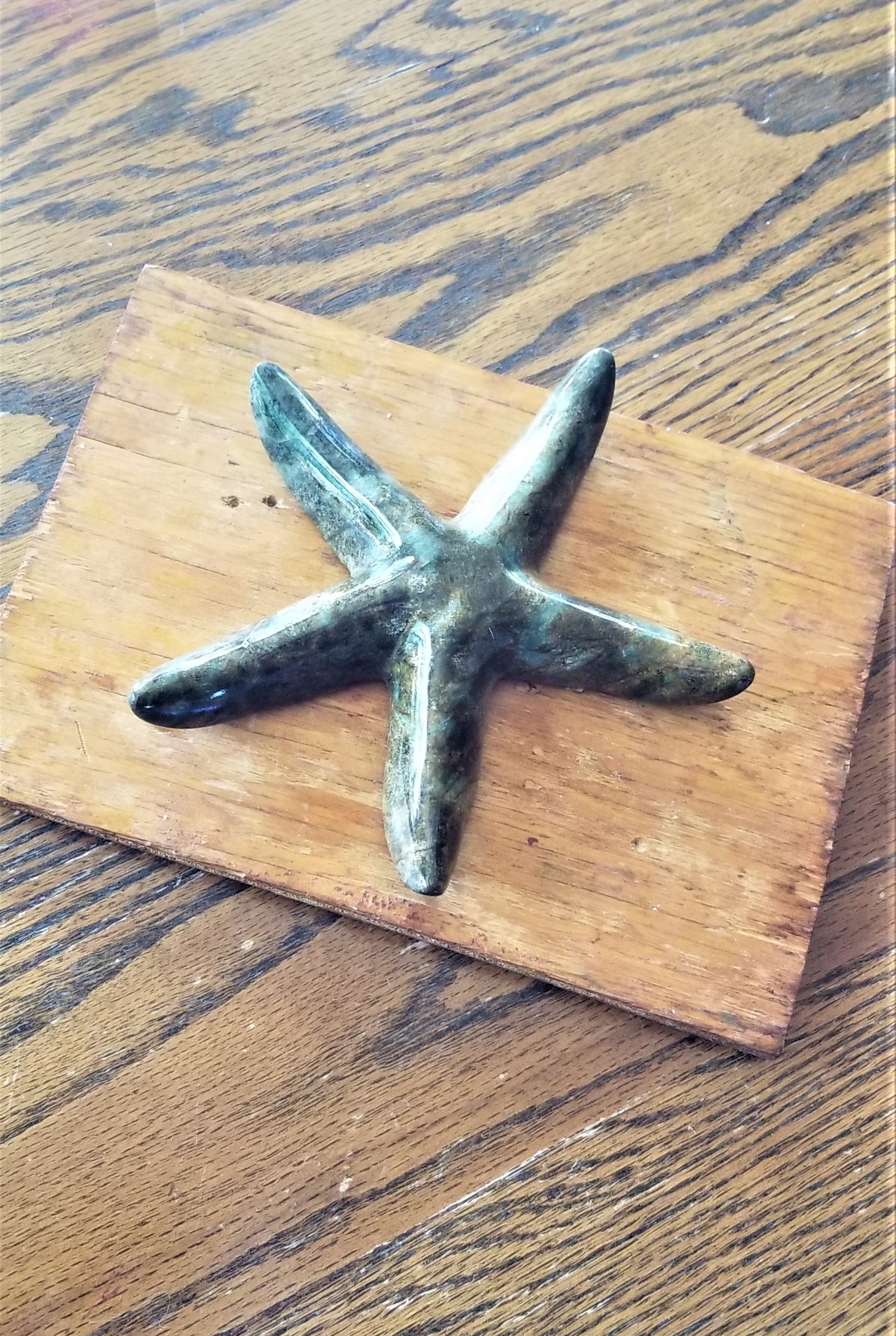
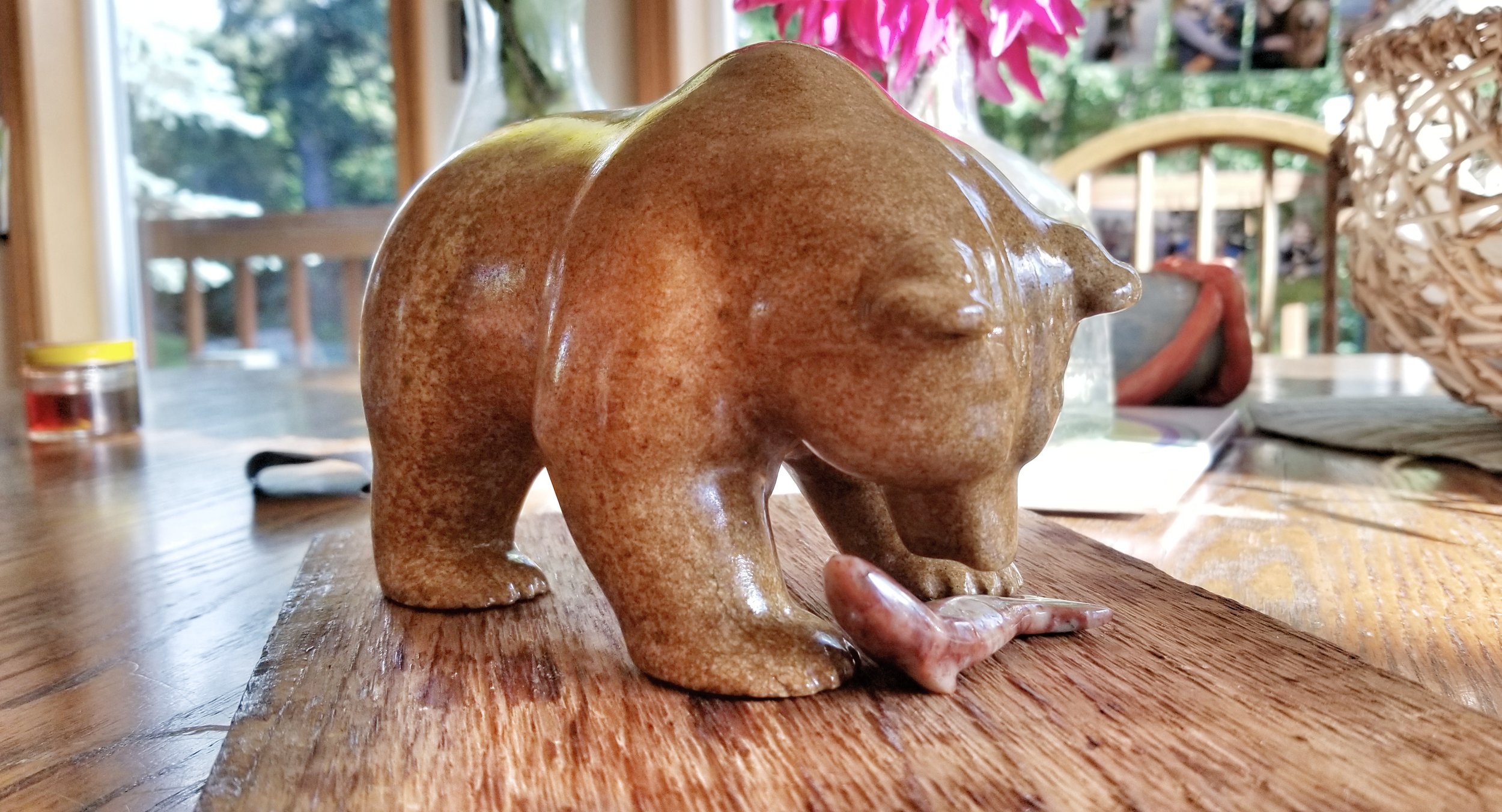
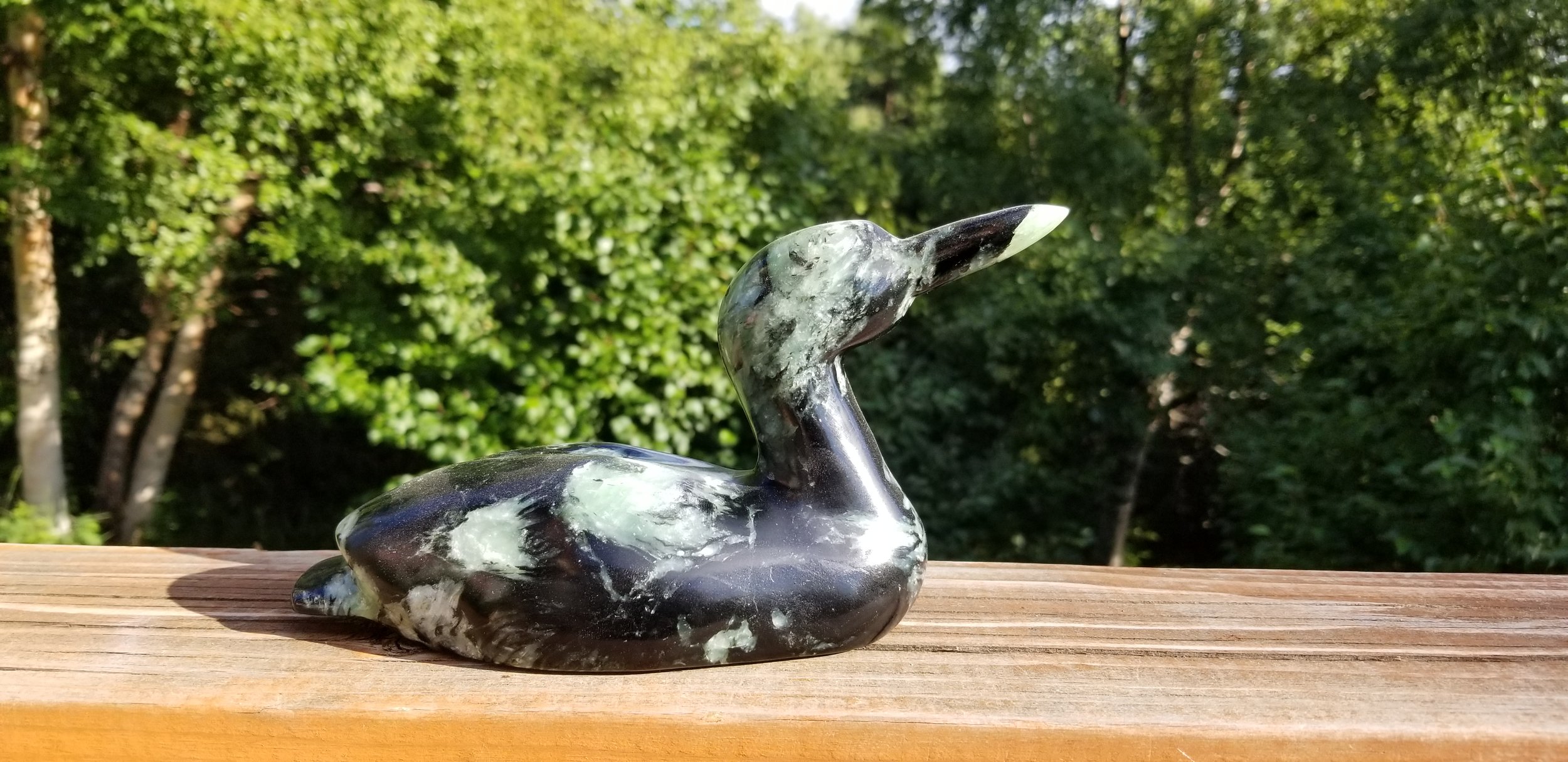
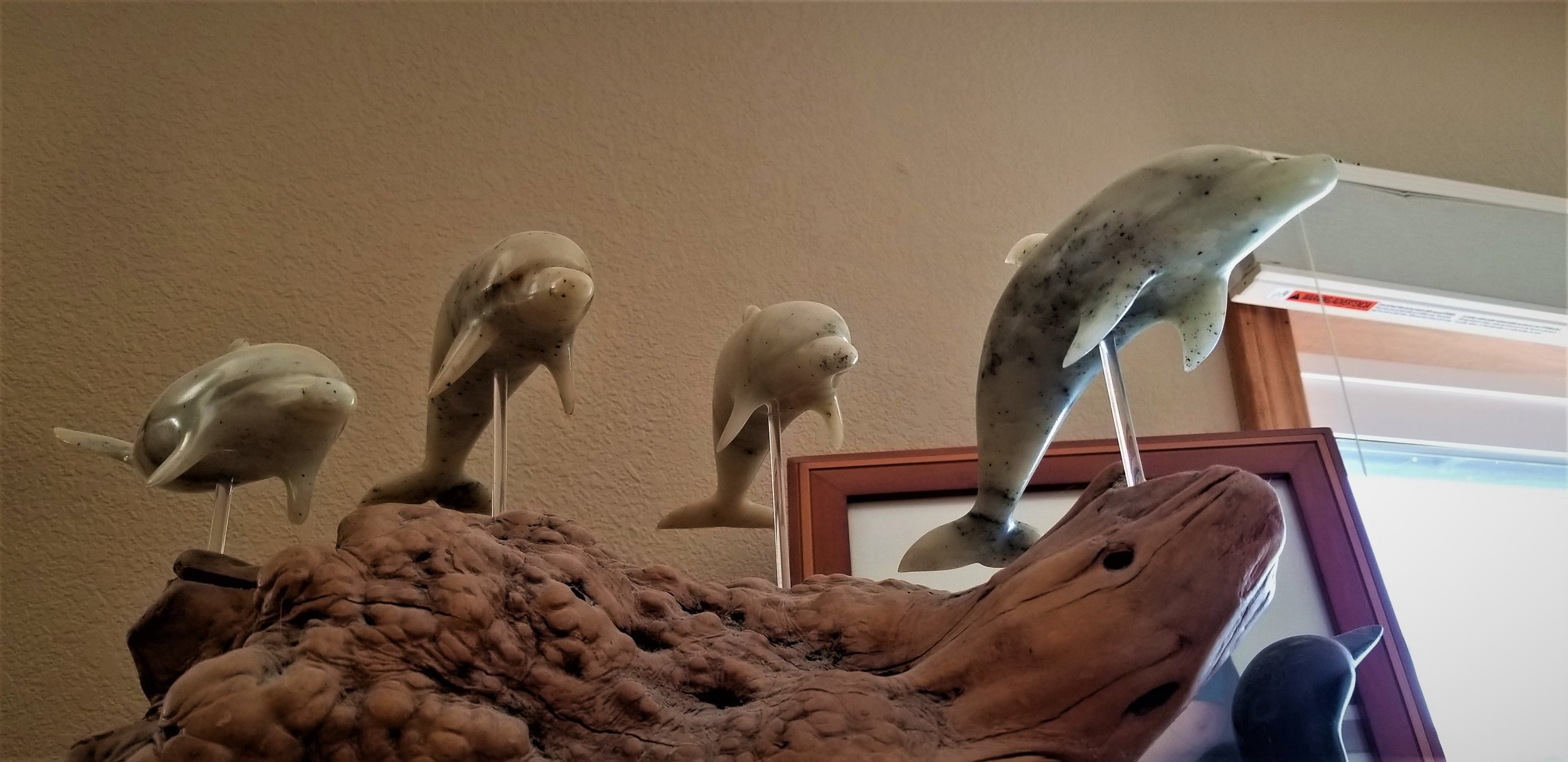


As an avid outdoors-man and lifelong Alaskan, Jack's work is clearly inspired by the wilderness he's lived in and enjoyed his entire life. These days Jack carves a lot of grizzlies and polar bears and he loves carving humpback whales and dolphins. In addition to carving, Jack is also a very talented illustrator. I remember desks at West High School that had Jack Hepler original sketches gracing their tops. I don't think he still graffitis desktops, but he does still draw intricate portrayals of animals and the wilds of Alaska.
His sculpture work can be seen at a few galleries in Anchorage and Homer. But really the best way to experience his work is seeing him in action at the Saturday market in Anchorage or at one of the local arts and crafts fairs. He will be at the following Anchorage shows this fall:
11/3/18: South High Bazaar
11/17/18: City Church Craft Show
12/1/18: UAA Craft Show
For anyone outside of Anchorage interested in his work you can contact Jack directly over email. And if you’re in the Portland area you can come visit my loon (#17) anytime.





